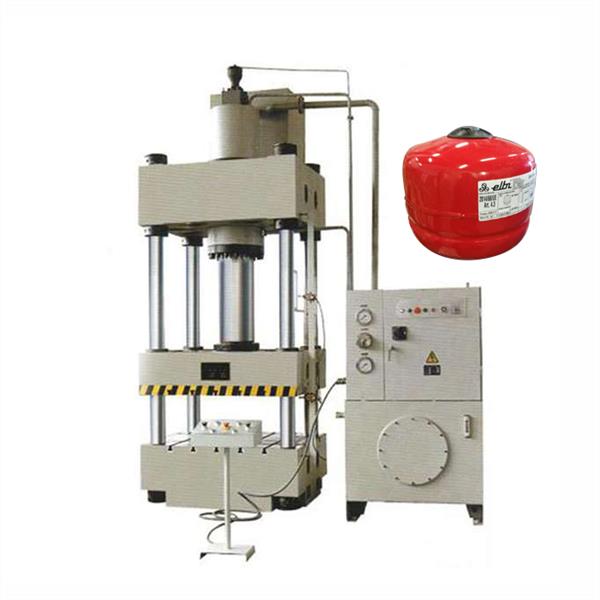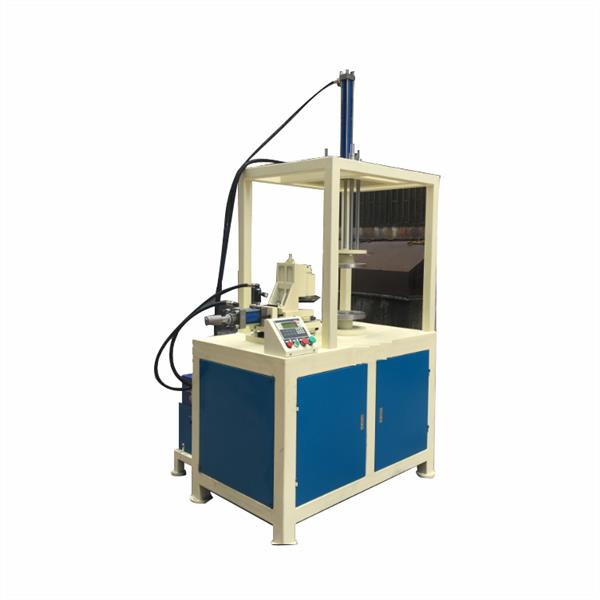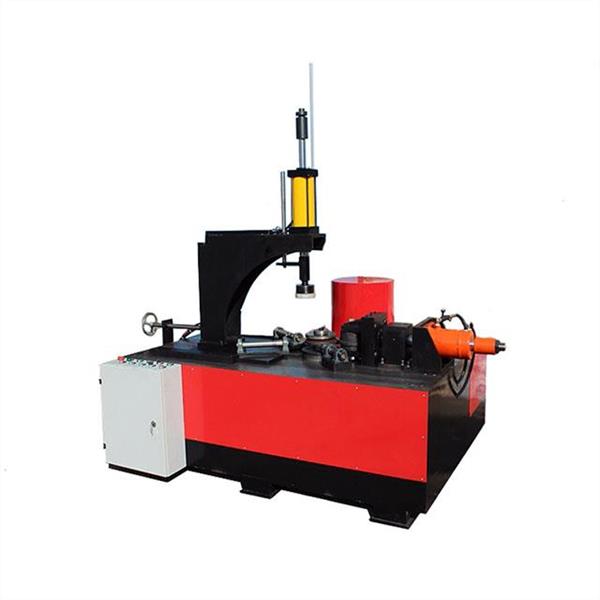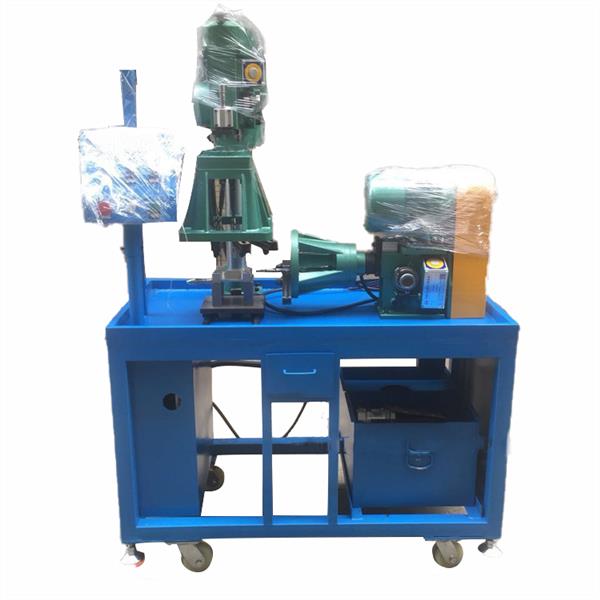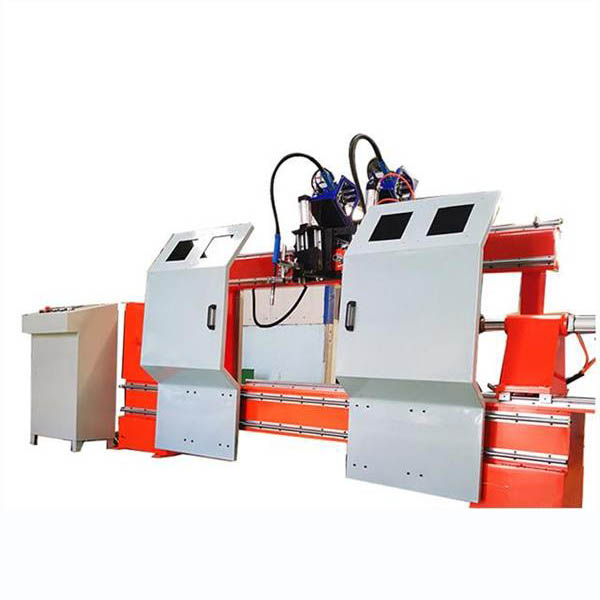News
Pressure Tank Production Line
Introduction:
In the bustling world of industrial manufacturing, the pressure tank production line stands as a testament to precision engineering and technological finesse. For factories seeking to understand the intricacies of establishing or optimizing their pressure tank production processes, this blog post serves as a comprehensive guide. From the production line setup to the machinery required and associated costs, let's delve into the fascinating realm of pressure tank production.
Section 1: The Foundation - Setting Up Your Production Line
Establishing a successful pressure tank production line begins with a solid foundation. From facility requirements to layout planning, this section explores the crucial steps involved in creating an efficient and streamlined production environment. A well-designed layout enhances workflow and ensures seamless integration of machinery.
In the realm of pressure tank production, success begins with a well-thought-out foundation. Whether you're establishing a new production line or revamping an existing one, attention to detail in the setup process is crucial.
1.1 Facility Requirements:
Before the first machine is installed, careful consideration of the production facility is paramount. Adequate space, proper ventilation, and strategic placement of workstations contribute to a smooth workflow. Factories aiming for optimal efficiency should conduct a thorough assessment of their available space and make necessary adjustments to accommodate the pressure tank production line.
1.2 Layout Planning:
Imagine the production floor as a symphony, each machine playing a specific role in harmony. Efficient layout planning ensures that machines are strategically placed to minimize unnecessary movements and streamline the production process. Flowcharts and 3D simulations can be invaluable tools in visualizing and optimizing the layout for maximum productivity.
1.3 Regulatory Compliance:
Navigating the regulatory landscape is a crucial aspect often overlooked. This includes compliance with safety standards, environmental regulations, and industry-specific guidelines. Understanding and adhering to these standards from the outset not only ensures a smooth production process but also prevents potential legal complications down the line.
1.4 Training Programs:
Investing in workforce development is an investment in the success of the production line. Consider implementing training programs to familiarize workers with the machinery, safety protocols, and the overall production process. A well-trained team enhances efficiency, reduces errors, and contributes to a safer working environment.
1.5 Scalability and Flexibility:
Anticipating future growth is integral to the success of any production line. A well-designed setup should be scalable, allowing for the integration of additional machinery or production modules as demand increases. Flexibility in the production line enables adaptation to changing market needs and technological advancements.
By laying a robust foundation through careful facility planning, layout optimization, regulatory compliance, workforce training, and future-proofing, factories can ensure that their pressure tank production line is poised for success. The next steps in this comprehensive guide will delve into the machinery that breathes life into the production line. Stay tuned for an in-depth exploration of the tools that make precision engineering a reality.
Section 2: Machinery Magic - Tools of the Trade
No pressure tank production line is complete without the right machinery. Dive into the world of cutting-edge technology as we explore the specific machines essential for the production process. CNC machines, welding equipment, and precision tools come together in a symphony of manufacturing excellence. Detailed insights into each machine's role and functionality will be provided.
Now that we've laid the groundwork for a well-organized production environment, let's delve into the heart of the pressure tank production line—the machinery. Each piece of equipment plays a crucial role in shaping, welding, and perfecting these industrial giants.
2.1 CNC Cutting Machines:
Imagine a ballet of precision – CNC cutting machines are the graceful performers. These machines, guided by computer programs, precisely cut raw materials into the required shapes for the pressure tanks. The accuracy achieved through CNC cutting ensures uniformity in the production process, a key factor in crafting high-quality pressure tanks.
2.2 Welding Stations:
Enter the workshop where sparks fly and craftsmanship meets technology – the welding stations. Skilled technicians operate welding machines to fuse the cut components into the sturdy structure of the pressure tanks. Welding is an art form, and these stations are the artist's studio where the strength and integrity of the tanks are forged.
2.3 Precision Tools and Measurement Devices:
In the realm of precision engineering, accuracy is king. Precision tools and measurement devices, such as calipers and gauges, are the unsung heroes of the production line. Technicians utilize these instruments to ensure that each component meets the exact specifications, contributing to the overall quality of the pressure tanks.
2.4 Coating and Finishing Stations:
After the structural integrity is ensured, the pressure tanks move to the coating and finishing stations. Here, protective coatings are applied to shield the tanks from corrosive environments. The coating process not only enhances the tanks' longevity but also contributes to their aesthetic appeal.
2.5 Quality Control Systems:
Enter the nerve center of the production line – the quality control systems. Advanced technologies, including X-ray machines and pressure testing equipment, are deployed to meticulously inspect each pressure tank. This step ensures that only products meeting stringent quality standards proceed to the next stage of the production process.
Understanding the role of each machine in the pressure tank production line is akin to decoding a complex symphony. The precision, skill, and coordination required are awe-inspiring. As we continue our journey through this comprehensive guide, the next segment will unravel the intricacies of the production process itself. Stay tuned for a behind-the-scenes look at how raw materials metamorphose into robust pressure tanks.
Section 3: Crafting Excellence - The Production Process
Embark on a step-by-step journey through the production process itself. From the initial raw materials to the final inspection, we'll uncover the secrets behind crafting high-quality pressure tanks. This section will provide an in-depth understanding of each stage, emphasizing the importance of precision, quality control, and efficiency.
With the machinery in place, the pressure tank production process becomes a symphony of precision, each step contributing to the creation of robust and reliable vessels. Let's unravel the intricacies of the production process, from raw materials to the final inspection.
3.1 Raw Material Selection:
The journey begins with the careful selection of raw materials. High-quality steel, known for its durability and strength, is chosen for the construction of pressure tanks. The selected sheets undergo rigorous testing to ensure they meet the required standards, setting the stage for a solid foundation.
3.2 Hydraulic Stretching:
Enter the hydraulic stretching press machine – the sheets are fed into this machine where they undergo controlled stretching. This process imparts the sheets with the necessary dimensions, ensuring uniformity and strength in the construction of the pressure tank bodies. The result is a foundation ready to withstand the rigors of industrial applications.
3.3 Edge Trimming and Cutting:
Precision takes center stage as the edge trimming and cutting machine refines the metal sheets. This step ensures that each component's edges are smooth and uniform, laying the groundwork for flawless assembly. The meticulous trimming enhances the aesthetic appeal and functionality of the pressure tanks.
3.4 Necking and Punching:
The necking machine then shapes the opening of the pressure tank, providing a seamless fit for subsequent components. Simultaneously, the punching press machine creates precise openings in the metal sheets, facilitating the integration of valves, sensors, and other essential elements. These steps are pivotal in customizing the tanks for specific industrial requirements.
3.5 Assembling:
In a choreographed dance, the assembling machine takes center stage. It carefully positions and joins the various components of the pressure tank, creating a unified structure. This step requires precision and attention to detail to ensure that each tank meets the exact specifications set during the design phase.
3.6 Circular Seam Welding:
The final act unfolds as the circular seam welding machine welds the circumferential seams of the pressure tank with accuracy. This welding process not only enhances the structural integrity of the tanks but also ensures leak-proof and reliable performance. The result is a seamlessly welded vessel ready to face the challenges of its intended applications.
3.7 Quality Control Inspection:
Before the pressure tanks embark on their journey to industrial applications, they undergo a meticulous quality control inspection. Advanced technologies, including X-ray machines and pressure testing equipment, are deployed to identify any imperfections. This stringent inspection ensures that only products meeting the highest quality standards move forward.
Understanding the step-by-step journey of raw materials transforming into pressure tanks highlights the craftsmanship, precision, and attention to detail that define excellence in pressure tank production. As our exploration continues, the next section will delve into the financial aspect, examining the costs associated with setting up and running a pressure tank production line. Stay tuned for valuable insights into optimizing your budget while maintaining top-notch quality.
Section 4: Counting the Cost - Understanding Production Expenses
Delve into the financial aspect of setting up and running a pressure tank production line. We'll break down the costs associated with machinery, raw materials, labor, and overhead, offering valuable insights for factories looking to optimize their budget while maintaining top-notch quality.
The production of pressure tanks is not only an art but also a science, and understanding the financial landscape is crucial for factories aiming to balance efficiency and cost-effectiveness. Let's dive into the various expenses associated with setting up and running a pressure tank production line.
4.1 Machinery Investment:
The first substantial investment lies in acquiring the necessary machinery. The hydraulic stretching press machine, edge trimming and cutting machine, necking machine, punching press machine, assembling machine, and circular seam welding machine are essential components. While these machines contribute to the precision and quality of the production process, their initial cost must be factored into the overall budget.
4.2 Raw Materials:
The quality of raw materials significantly influences the performance and durability of the pressure tanks. High-grade steel sheets, the primary material used in production, come with a cost. Balancing cost and quality is essential to ensure the longevity and reliability of the finished products.
4.3 Labor Costs:
The skilled workforce operating and maintaining the machinery is an integral part of the production process. Training programs, wages, and benefits contribute to labor costs. Investing in a well-trained and motivated team ensures the efficient operation of the production line and, ultimately, the quality of the pressure tanks.
4.4 Facility and Utilities:
The production facility, including rent or construction costs, utilities, and maintenance, is a recurring expense. A well-designed and maintained facility contributes to a safe and efficient working environment, impacting overall productivity.
4.5 Regulatory Compliance and Certification:
Ensuring compliance with industry standards and obtaining necessary certifications incurs additional costs. This includes fees for regulatory approvals, safety inspections, and certification processes, which are crucial for building trust with clients and meeting legal requirements.
4.6 Research and Development:
Investing in research and development is essential for staying ahead of industry trends and technological advancements. While it may not be a direct production cost, allocating funds for innovation ensures the production line remains competitive and capable of meeting evolving market demands.
4.7 Marketing and Sales:
Promoting and selling the pressure tanks requires a budget for marketing and sales activities. This includes developing marketing materials, attending industry events, and maintaining an online presence. An effective marketing strategy contributes to brand visibility and customer engagement.
4.8 Contingency Fund:
In the dynamic landscape of manufacturing, unexpected challenges may arise. Having a contingency fund set aside for unforeseen expenses ensures the production line can adapt to changes without compromising quality or efficiency.
Understanding these various costs is essential for factories seeking to optimize their budget while maintaining the high standards required for pressure tank production. Striking a balance between efficiency and cost-effectiveness is key to a sustainable and successful production line. As we move forward, the next section will explore industry insights and future trends, providing a forward-looking perspective for factories to stay ahead in the competitive landscape. Stay tuned for a glimpse into the future of pressure tank production.
Section 5: Realizing the Potential - Industry Insights and Future Trends
Explore industry trends, innovations, and emerging technologies that can shape the future of pressure tank production. This section will provide a forward-looking perspective, empowering factories to stay ahead of the curve and remain competitive in the dynamic landscape of industrial manufacturing.
In the ever-evolving landscape of industrial manufacturing, staying ahead of industry trends and embracing innovation is crucial for the sustained success of a pressure tank production line. Let's explore industry insights and future trends that can shape the trajectory of this dynamic sector.
5.1 Industry Trends:
Keeping a finger on the pulse of industry trends is akin to having a compass guiding the production line towards future success. Stay abreast of emerging technologies, materials, and design concepts within the pressure tank sector. This proactive approach positions the production line to adapt swiftly to changing market demands and maintain a competitive edge.
5.2 Automation and Smart Technologies:
The integration of automation and smart technologies is a transformative force in industrial manufacturing. Explore opportunities to incorporate robotics and artificial intelligence into the production line. Automation not only enhances efficiency but also contributes to precision and consistency in the manufacturing process.
5.3 Sustainable Practices:
With an increasing emphasis on sustainability, incorporating eco-friendly practices in the production line can be a strategic move. Consider using recycled materials, optimizing energy consumption, and adopting environmentally conscious manufacturing processes. Sustainable practices not only align with global initiatives but also appeal to environmentally conscious clients.
5.4 Customization and Flexibility:
Consumer demands are becoming increasingly diverse. The ability to offer customized solutions and flexible production processes is a key trend. Explore ways to adapt the production line to accommodate varying specifications, sizes, and functionalities of pressure tanks. This flexibility enhances the line's market appeal and responsiveness.
5.5 Digitalization and Data Analytics:
The era of Industry 4.0 is upon us, bringing with it the power of digitalization and data analytics. Implementing advanced data analytics tools can provide valuable insights into production efficiency, quality control, and predictive maintenance. Embrace the digital revolution to optimize operations and decision-making.
5.6 Global Market Expansion:
Consider the global market as an opportunity for expansion. Understanding international standards, regulations, and market demands can open doors to new clientele. Explore strategic partnerships and collaborations to tap into diverse markets and position the pressure tank production line as a global player.
5.7 Continuous Improvement Culture:
Foster a culture of continuous improvement within the production line. Encourage feedback from the workforce, invest in ongoing training programs, and regularly assess and upgrade machinery and processes. A commitment to continuous improvement ensures that the production line remains adaptable and efficient over the long term.
Conclusion:
As we conclude this comprehensive guide to pressure tank production lines, we invite factories to explore the possibilities within their grasp. For further inquiries, guidance, or to discuss your specific production needs, reach out to us at [Contact]. Your journey to excellence in pressure tank production begins here. Connect with us to unlock the full potential of your manufacturing capabilities.
CATEGORIES
News
Contact Us
Tel:0086-13394110095
Fax:0086-411-39015062
Phone:0086-13394110095
Email:[email protected]
Add:20# Ganwan Street, Zhongshan District, Dalian City, China



